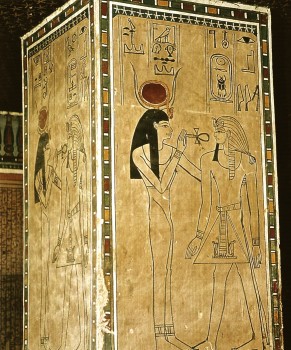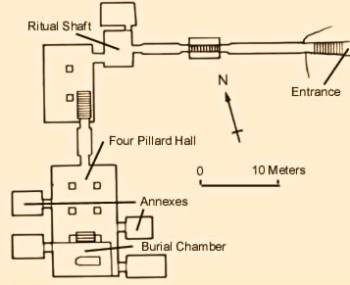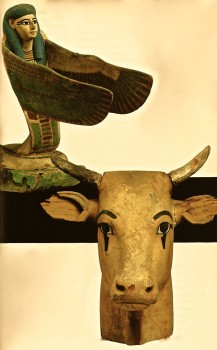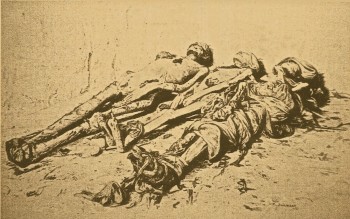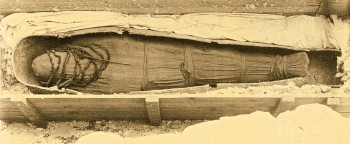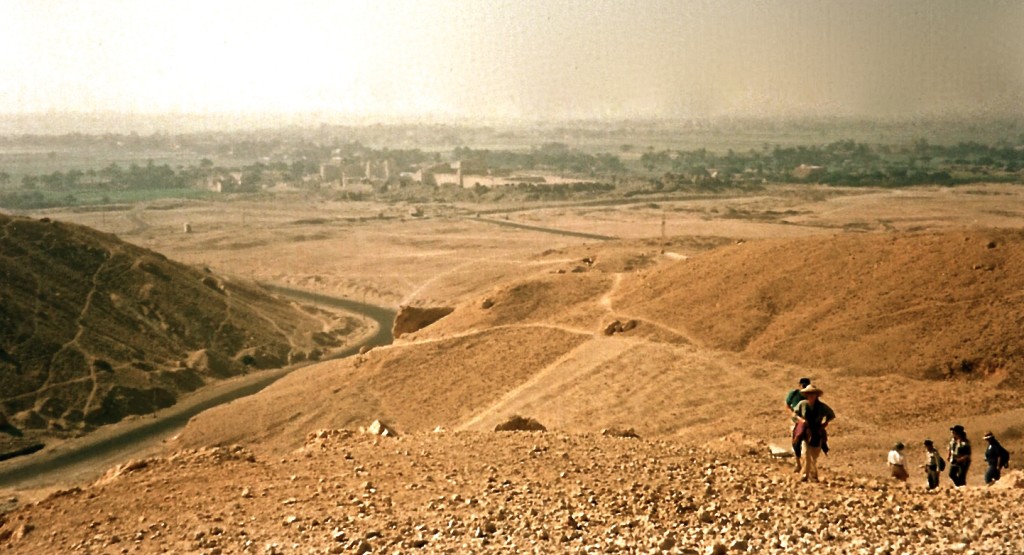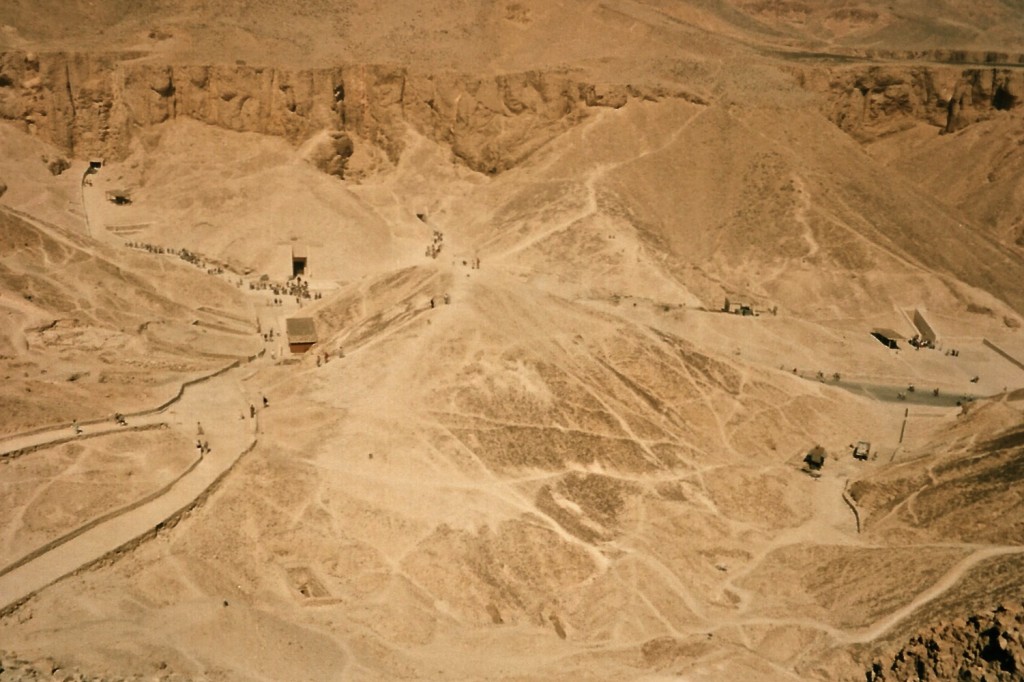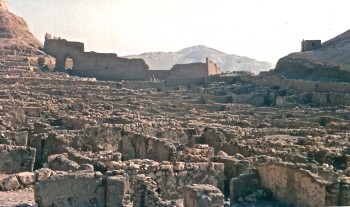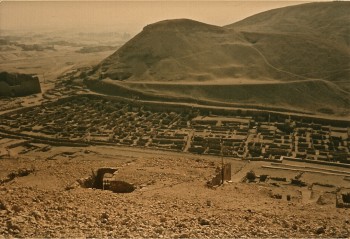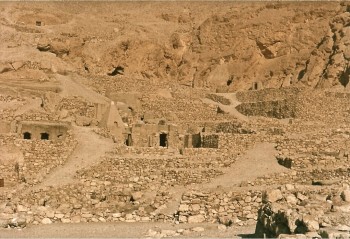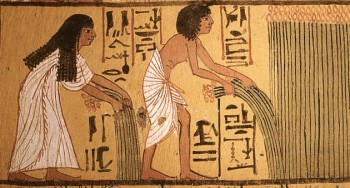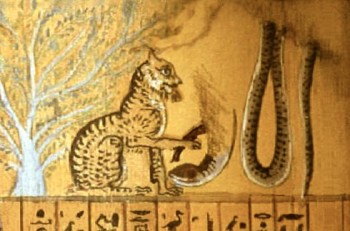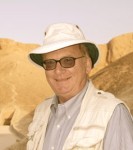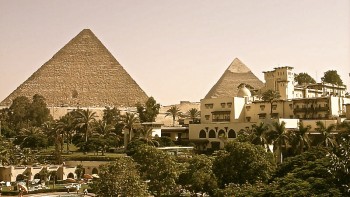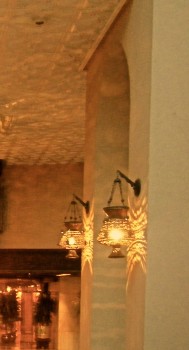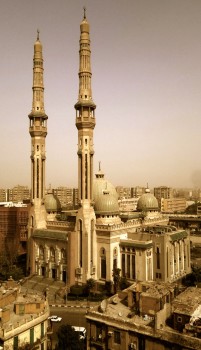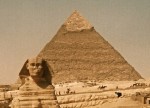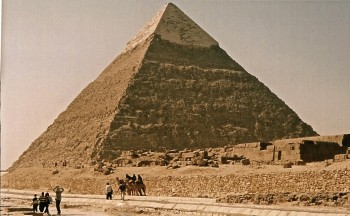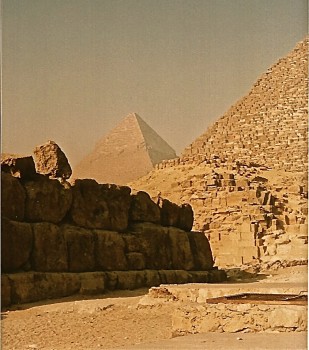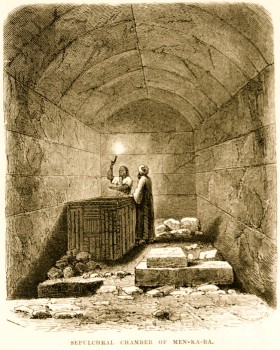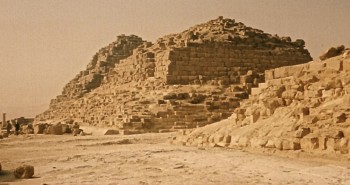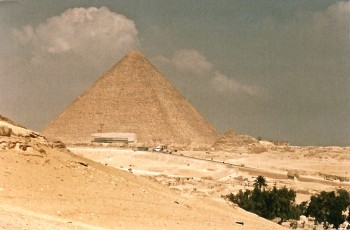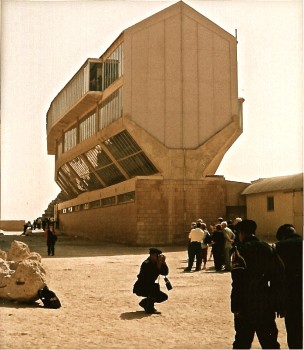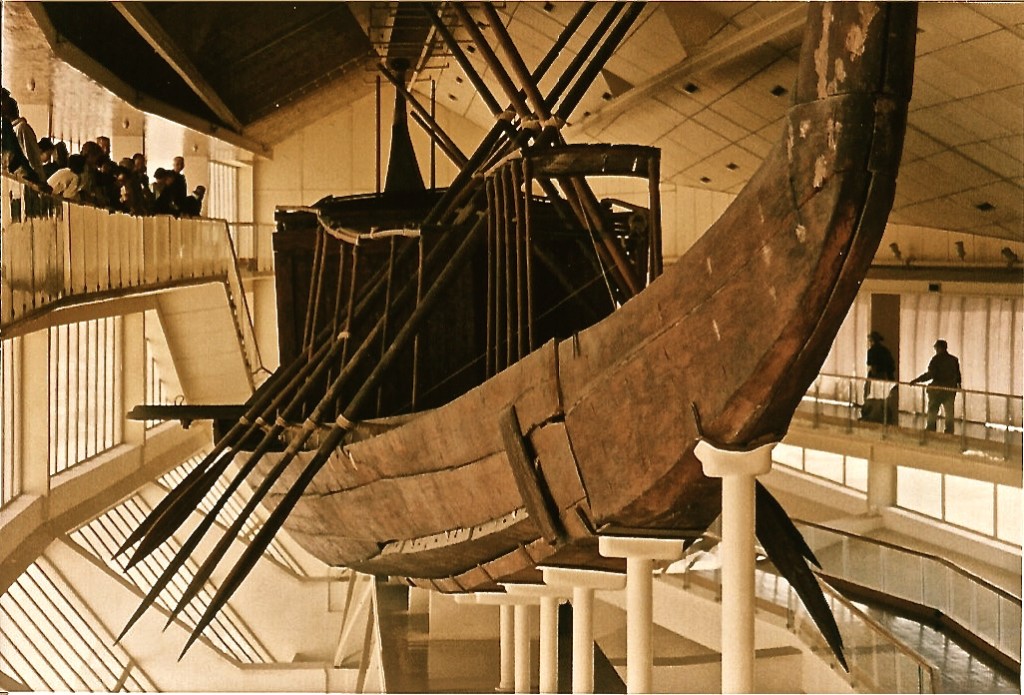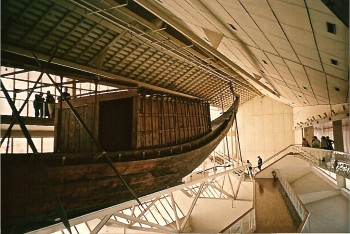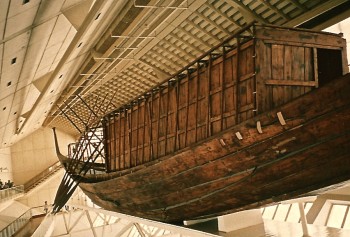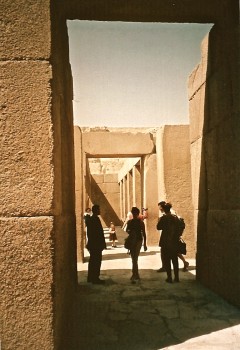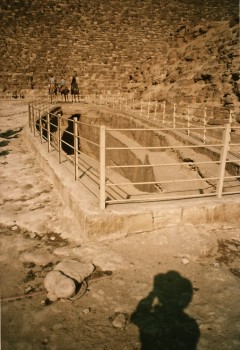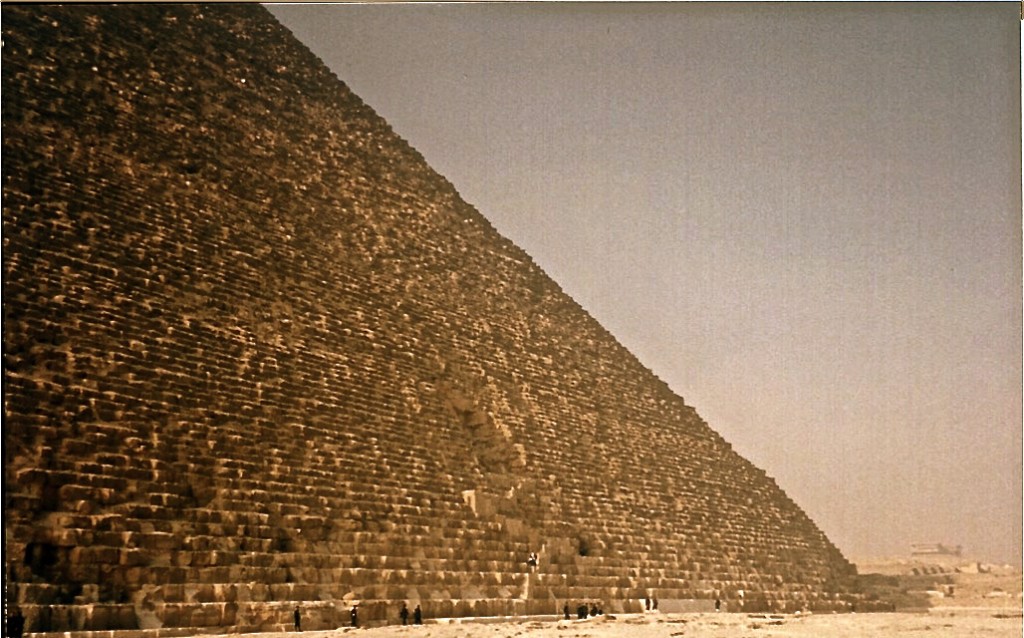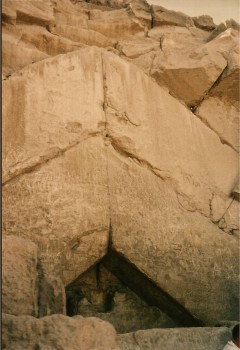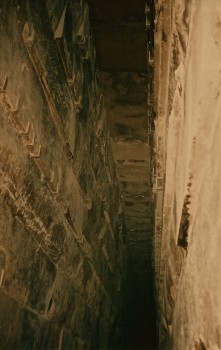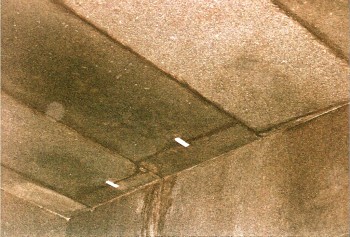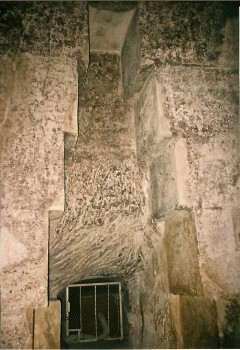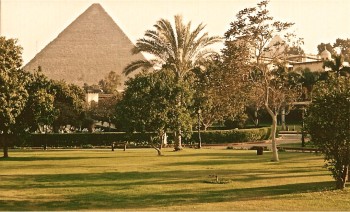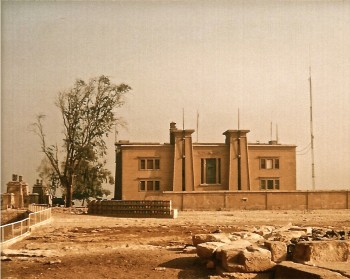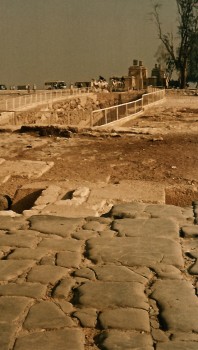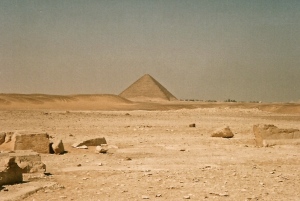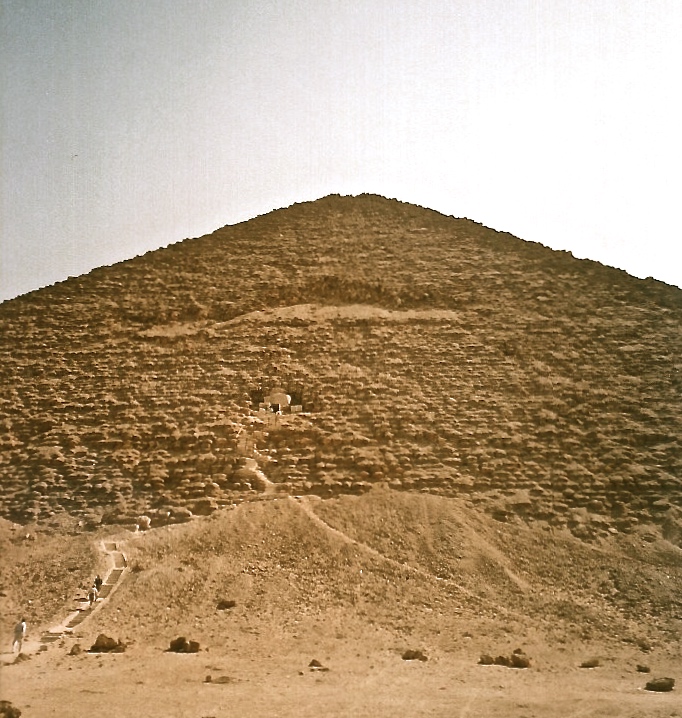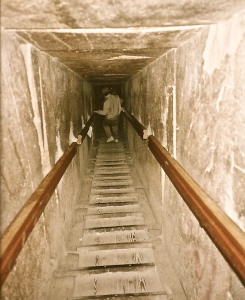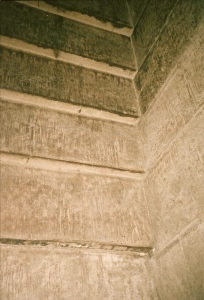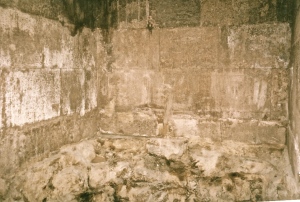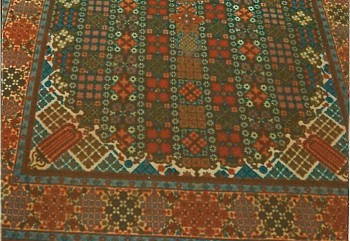17 March 2000 (early morning)

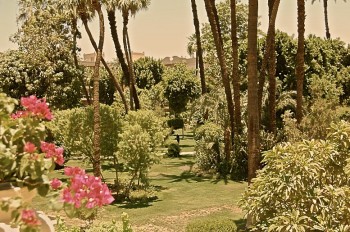
Winter Palace garden, Luxor. Photo courtesy of Bonnie Ann Cain-Wood, Wikimedia Commons
The local Luxor muezzin issues his call to prayer at four this morning. Lovely to lie in bed and listen to it although, thanks to the miracle of modern amplification methods, the volume is ear-splitting. It doesn’t end with the muster — perhaps due to the Eid al-Aida festival? — and I’m able to enjoy it for nearly an hour. When it finally stops, a rooster crows in the distance. Then a crow caws, loudly, outside our window and, as the sun peeks over the horizon, hundreds of sparrows in the hotel garden burst out chirping. Chaz sleeps soundly through it all.
Today we’ll go to the worker’s village at Deir el-Medina, home to the men who built and decorated the tombs in the Valley of the Kings, then walk their ancient trail over the cliffs and explore royal resting places for two hours before having a catered lunch in the cafeteria. After that we’ll stop at Deir el-Bahari and Hatshepsut’s temple, return to the hotel for a couple of hours, visit the Luxor Museum when it opens at 5:00 pm, and top things off with an after-dark tour of Luxor temple.

Luxor waterfront. Photo courtesy of Marek Kocjan, Wikimedia Commons.
After breakfast, we leave the hotel and jay-walk across the Corniche — the traffic artery that runs parallel to the Nile — then go down a long ramp to water level (the Nile is many feet below the street) and board a boat called Rameses. The Rameses is white with a painted decoration of lotus blossoms in blue, green and red. We perch around the sides on bench seats, a striped canvas canopy over our heads, as the two-stroke outboard motor propels us toward the West Bank.
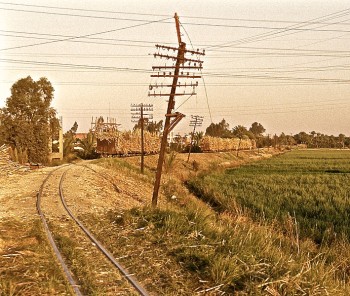
Sugar Cane train, Luxor Egypt. Photo courtesy of Marc Ryckaert, Wikimedia Commons.
Once on the West Bank, we board a bus and head for Deir el-Medina.
We’re surrounded by fields of sugarcane, rail tracks snaking through them. Farmers load the cane onto flatbed rail cars that have tall metal posts on the sides to hold the stalks in place.

Luxor West Bank: Qurna Village.
First stop is a checkpoint to buy our tickets. The Western cliffs are straight ahead and the village of Qurna is on a hill to our right. The houses are cream, umber, and blue, with shutters painted rust and bright green.
Qurna is famous because many of those innocent looking homes are built directly on top of ancient tombs. The mere sight of it is enough to send my mind down an exciting rabbit hole, chasing thoughts of DB320, the royal mummies cache, which was discovered and exploited by that infamous Qurna family, the el-Rassuls.

Maspero lounging at the entrance to DB320.
As the story goes, sometime in the 1860s — the exact date is unknown — Ahmed Abd el-Rassul stumbled upon a deep shaft hidden among the Theban cliffs. (Thebes was the ancient Greek name for Luxor.)

Items from DB320. With many thanks for this image to the Manchester Museum.
The tomb was stuffed with an eye-popping assortment of pharaohs, coffins, and burial equipment, all hidden (most likely) during the 22nd Dynasty, a good 350 years after the heyday of perhaps the tomb’s most famous denizen, Ramses II.
Most Egyptologists believe the tomb was originally intended for 21st Dynasty High Priest Pinedjem II and his family, and that earlier royals like Ramses II were crammed in after Pinedjem, when political instability and looting prompted Valley of the Kings caretakers to perform an overall tidying up/rescue mission.
Once found by the el-Rassuls, the tomb became their bank account as they carefully parceled artifacts onto the antiquities market. The authorities knew something was up, but it wasn’t until the mid 1870s that an official investigation was launched.
Ahmed Abd el-Rassul and a younger brother were arrested and tortured, to no avail. Ahmed was released but then apparently had a change of heart and, in 1881, confessed to Emile Brugsch, assistant to Antiquities Chief Gaston Maspero. (Maspero was unfortunately in Paris.) On July 6th, Brugsch was shown the tomb and stunned by what he saw in the light of his torch:
…and there, standing against the walls or lying on the floor, I found an even greater number of mummy cases of stupendous size and weight. Their gold coverings and their polished surfaces so plainly reflected my own excited visage that it seemed as though I was looking into the faces of my own ancestors.
Fearful of attack by the locals, Brugsch put a crew in motion around the clock to clear the tomb as quickly as possible and send it all packing to Cairo. The good news is that he recovered at least 40 mummies and their coffins, plus several thousand smaller objects. The bad news is that it was done with such haste that the chance to tease out a detailed history of the tomb was lost. As a result, the tomb and its contents have been a nice Egyptological chew-toy ever since.
If you’d like to know more about the Royal Mummy Cache (who wouldn’t?!) then you can do no better than to start with Al-Mummia (The Night of Counting the Years), an acclaimed 1969 Egyptian film that reenacts the entire thrilling discovery. Look for it on Youtube.
Update
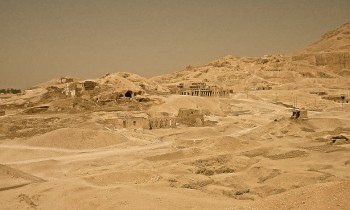
Razed village of Qurna, July 2009. Photo courtesy of Remih, Wikimedia Commons.
The historic village of Qurna no longer exists. In 2005, the Egyptian government evicted the residents and moved them to new houses. The old buildings were bulldozed and the debris left in place.
Then in 2011, the disastrous drop in tourism that followed the Egyptian revolution threw most of the locals out of work. The American Research Center in Egypt stepped forward with a plan to provide employment through a detailed survey and clean-up. The Qurna Site Improvement Project, lead by Dr. John Shearman and Dr. Andrew Bednarski, employed more than six-hundred workmen for two years, including conservation training and a first-ever recording of ethnographic information about the inhabitants.
If you wish to support such caring efforts, then I urge you to join the American Research Center in Egypt and affiliate with the Northern California Chapter. It costs nothing extra and will give you access to The Cartouche newsletter.
![]() In March of 2000 I went to Egypt with my husband, Chaz Benedict. The trip was sponsored by the Ancient Egypt Studies Association in Portland, Oregon (a group that sadly no longer exists) and was organized and managed by Bill and Nancy Petty of the superb Museum Tours .
In March of 2000 I went to Egypt with my husband, Chaz Benedict. The trip was sponsored by the Ancient Egypt Studies Association in Portland, Oregon (a group that sadly no longer exists) and was organized and managed by Bill and Nancy Petty of the superb Museum Tours .

